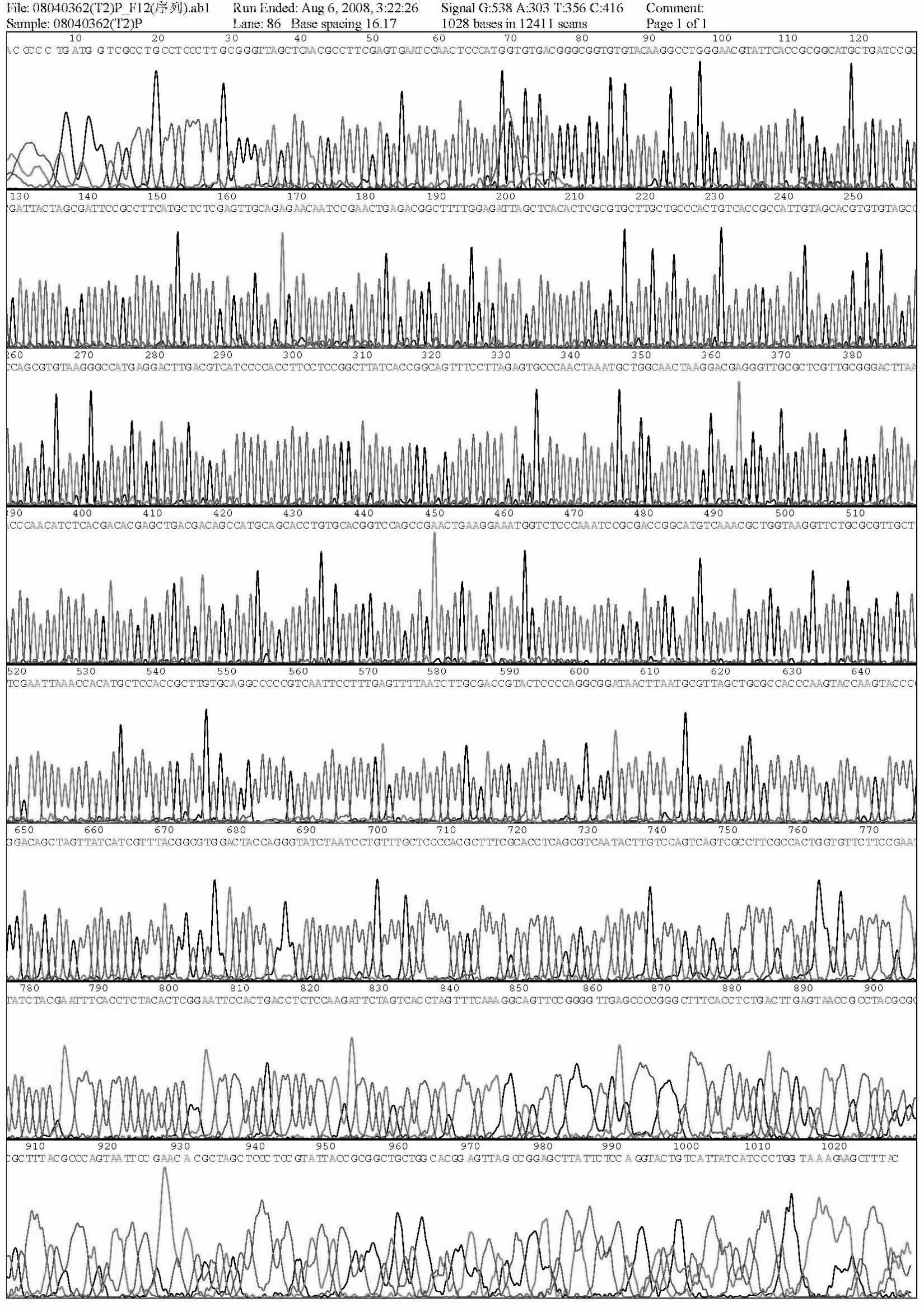A low-temperature degrading polycyclic aromatic hydrocarbon strain and its application in groundwater bioremediation of petroleum hydrocarbon-contaminated sites
A polycyclic aromatic hydrocarbon and bioremediation technology, which is applied in the fields of environmental engineering and microbial engineering, can solve the problems of refractory engineering of polycyclic aromatic hydrocarbon degrading bacteria and many types of polycyclic aromatic hydrocarbons, and achieves a wide range of degradation substrates, broad application potential, The effect of rapid degradation
- Summary
- Abstract
- Description
- Claims
- Application Information
AI Technical Summary
Problems solved by technology
Method used
Image
Examples
Embodiment 1
[0037] The isolation and screening method of Neosphingobacterium provided by the invention.
[0038] In winter in the north, when the outdoor temperature is less than -20°C for a long period of time, surface soil samples at a distance of 5-20 cm below the surface and groundwater samples are collected from a contaminated site in Jilin Oilfield, and they are used as bacterial sources for low-temperature natural enrichment culture. The soil and groundwater samples taken are about to be made into bacterial suspension, and the supernatant is added to the enrichment medium [inorganic salt medium (K 2 HPO 4 1550, NaH 2 PO 4 850, (NH 4 ) 2 SO 4 2000, MgCl 2 ·6H 2 O 100, EDTA 10, ZnSO 4 ·7H 2 O 2.0, CaCl 2 ·2H 2 O 1.0, FeSO 4 ·7H 2 O 5.0, NaMoO 4 ·2H 2 O 0.2, CuSO 4 ·5H 2 O 0.2, CoCl 2 ·6H 2 O 0.4, MnCl 2 ·2H 2 O 1.0, pH 7.0, unit: mg / L), 0# diesel oil 10 mL / L, glucose 5 g / L, yea...
Embodiment 2
[0042] Low-temperature degradation of polycyclic aromatic hydrocarbons by growth cells of Sphingobacterium neoformans.
[0043] Inoculate Sphingobacterium neoformans into polluted groundwater containing 300 mg / L diesel oil, and at the same time make a blank control without inoculation, place the above samples at 10°C and culture on a shaker at 150 rpm for 3 days, and perform full-scan analysis by gas chromatography-mass spectrometry after extraction , compared with the spectrum library, neosphingobacterium can completely degrade polycyclic aromatic hydrocarbons in diesel oil: naphthalene, 1-methylnaphthalene, 2-methylnaphthalene, 2-ethylnaphthalene, 2,6-dimethylnaphthalene Naphthalene, 2,7-dimethylnaphthalene, 1,8-dimethylnaphthalene, 1,4-dimethylnaphthalene, 1,6-dimethylnaphthalene, 1,4,5-trimethylnaphthalene, 1 , 6,7-trimethylnaphthalene, 2,3,6-trimethylnaphthalene, 2-methylbiphenyl, 4-methylbiphenyl, phenanthrene, 1-methylphenanthrene, 2-methylphenanthrene, 4 -Methylph...
Embodiment 3
[0045] Low-temperature degradation of polycyclic aromatic hydrocarbons by static-based cells of Sphingobacterium neoformans.
[0046] Inoculate neosphingobacterium in diesel inorganic salt medium (the medium is the same as above, the concentration of diesel oil is 300mg / L), 10 ℃, 150rpm shaker culture to the logarithmic growth phase, the number of bacteria is about 10 9 -10 11 cells / mL, the strain suspension was centrifuged at 8000rpm at 4°C for 15 minutes at high speed, washed with phosphate buffer, and then centrifuged and washed three times, and finally the bacteria were collected to prepare a static-based cell suspension. Liquid (the number of bacteria is about 10 10 individual / mL). Carry out the following experiments respectively.
[0047] (1) Inoculate the static-based cell suspension of Sphingobacterium neosphingosus at 5% (V / V) in naphthalene-contaminated groundwater (the concentration of naphthalene is 20 mg / L). At a low temperature of 10°C, the de...
PUM
 Login to View More
Login to View More Abstract
Description
Claims
Application Information
 Login to View More
Login to View More - R&D
- Intellectual Property
- Life Sciences
- Materials
- Tech Scout
- Unparalleled Data Quality
- Higher Quality Content
- 60% Fewer Hallucinations
Browse by: Latest US Patents, China's latest patents, Technical Efficacy Thesaurus, Application Domain, Technology Topic, Popular Technical Reports.
© 2025 PatSnap. All rights reserved.Legal|Privacy policy|Modern Slavery Act Transparency Statement|Sitemap|About US| Contact US: help@patsnap.com

